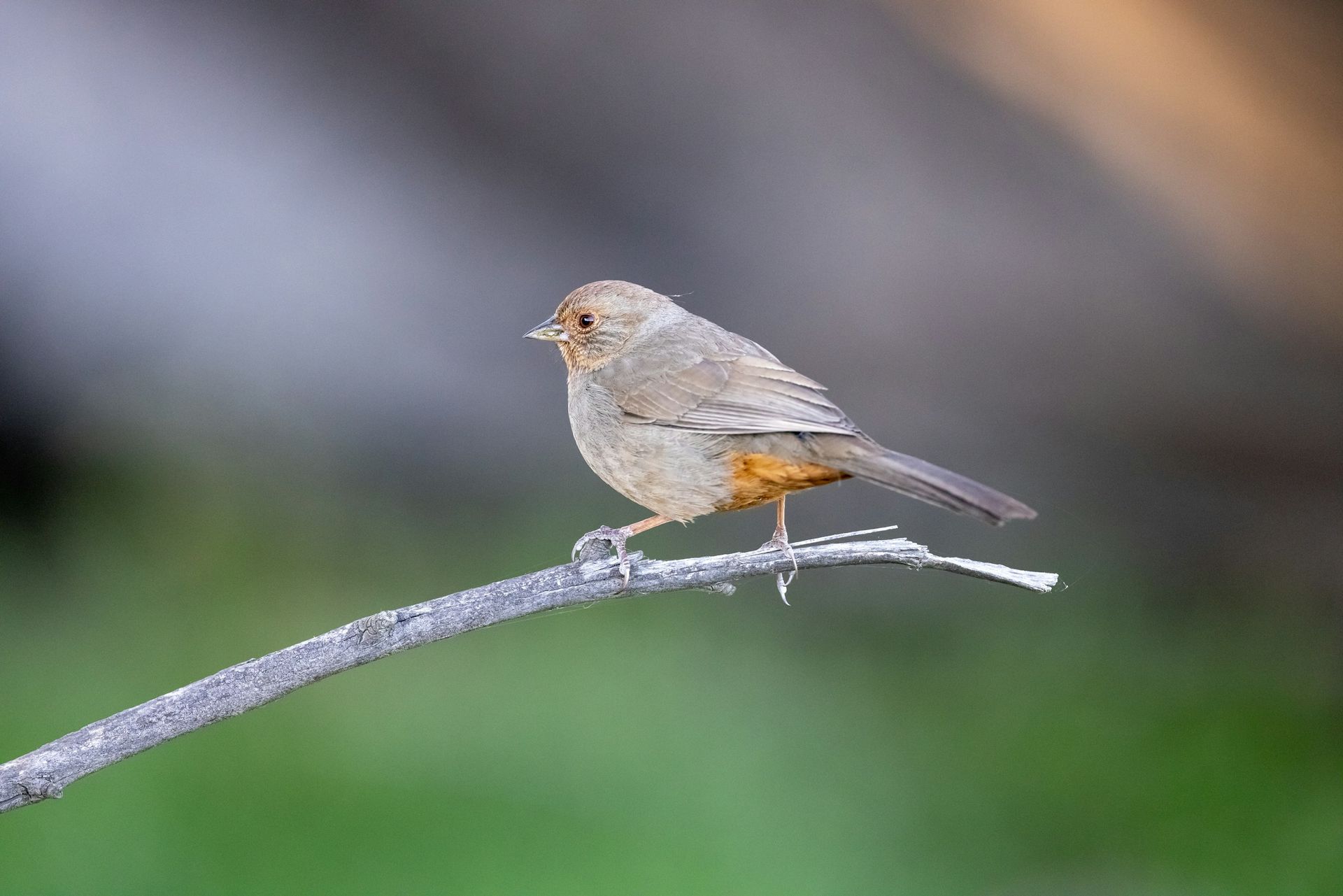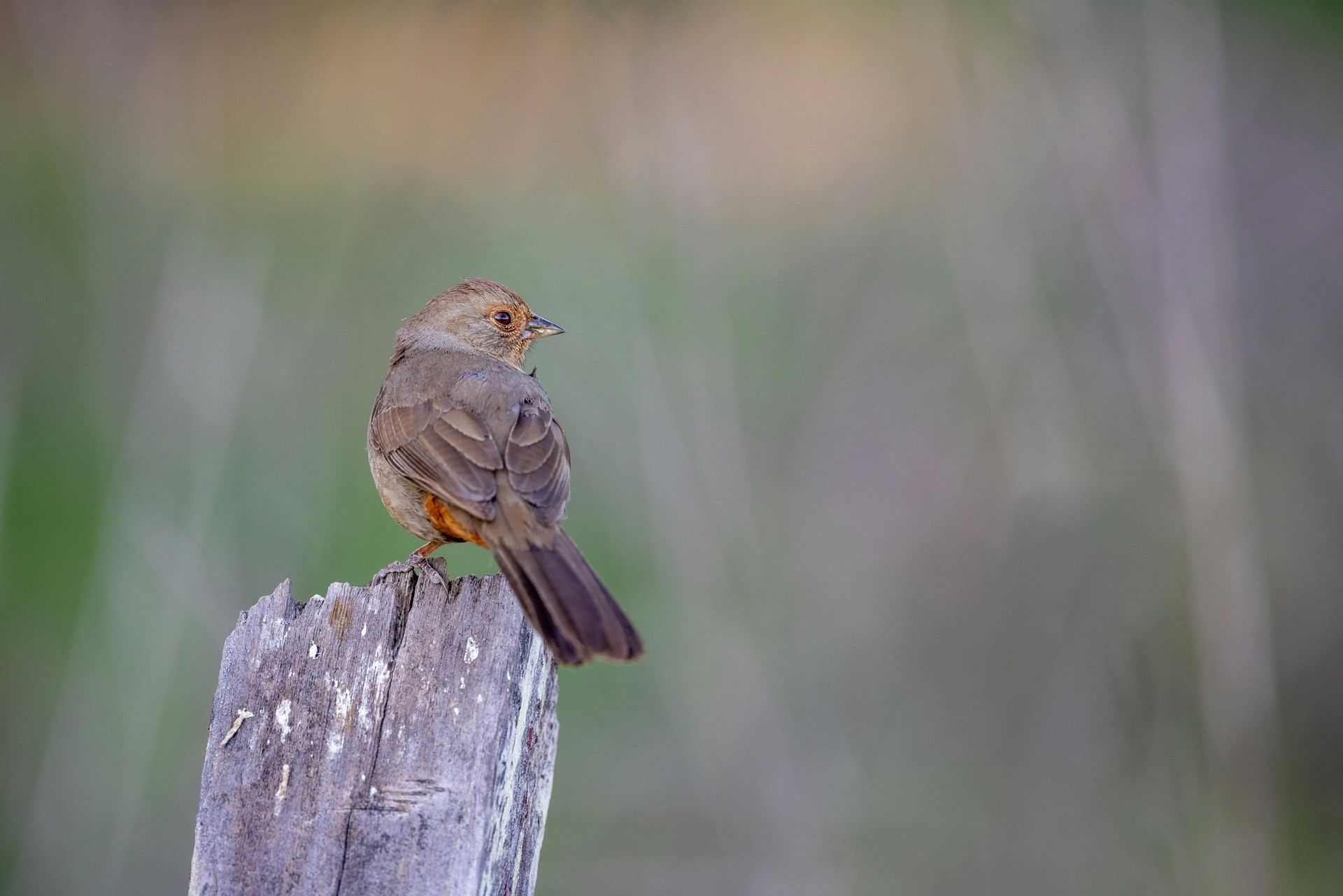California Towhees are a small, unassuming songbird native to the chaparral, woodlands, and suburban gardens of the western United States, particularly in California. It is known for its plain brown plumage, which helps it blend seamlessly into dry, scrubby habitats. Despite its modest appearance, this bird is highly territorial and frequently observed foraging on the ground for seeds, insects, and berries.
Measuring around 8-10 inches in length with a wingspan of approximately 11 inches, the California Towhee has a round body, a long tail, and a slightly curved beak ideal for foraging. They are often found in pairs or small family groups, using their strong legs to scratch at the ground in search of food. Unlike more social songbirds, California Towhees tend to remain close to their home territory year-round, rarely migrating.
During the breeding season, which typically begins in early spring, males and females form monogamous bonds and work together to build nests in dense shrubs or low trees. The female lays 2-4 eggs per clutch, and both parents participate in raising the young. Chicks fledge within two weeks but stay near their parents as they learn to forage independently.
Natural predators of the California Towhee include hawks, snakes, and domestic cats. However, human activities such as urban expansion and pesticide use pose significant threats to their populations. Despite these challenges, their adaptability to suburban environments has helped them remain a common sight throughout their range.

For your safety and the well-being of wildlife, please observe animals from a distance and avoid touching or disturbing them. If you encounter an animal that appears injured or in distress, contact a licensed wildlife rescue organization for guidance before intervening.
Found An Animal? Not sure how to help a wild animal in need? Learn when to step in, who to call, and how to help safely.
Did You Know?
- California Towhees use a distinctive "double-scratch" foraging technique, where they hop backward and kick up leaf litter with both feet to uncover hidden insects and seed
- They are one of the most territorial songbirds, often chasing intruders away from their nesting areas.
- Unlike many songbirds, they do not migrate, preferring to stay within their established territories year-round.
- Their song is a repetitive, metallic "chip" sound, often used to communicate with mates and defend territory.
- Males and females look identical, making them difficult to distinguish in the wild.
- Towhees are known to attack their own reflections, mistaking them for intruders.
- They have adapted well to urban environments, frequently nesting in gardens and parks.
- Towhees form strong pair bonds, with mates often remaining together for life.
- Their diet includes a mix of seeds, insects, and small fruits, making them important seed dispersers in their ecosystem.
Problems Faced In The Wild
- Habitat Loss: Urban expansion and land development reduce nesting and foraging areas.
- Pesticide Use: Chemicals reduce insect populations and can poison birds indirectly.
- Window Collisions: Mistaking reflections for open space leads to injury and mortality.
- Climate Change: Altered weather patterns impact food availability and nesting success.
- Competition for Resources: Invasive bird species can displace California Towhees from prime habitats.
Tips For Cohabitation
- Provide Native Plants: Planting native shrubs and trees supports towhee foraging and nesting.
- Reduce Window Strikes: Use decals or external screens to make glass more visible to birds.
- Keep Cats Indoors: Protect wildlife by keeping domestic cats from hunting ground-dwelling birds.
- Preserve Natural Spaces: Maintain brushy areas and hedgerows to provide habitat for towhees.
- Offer Bird Feeders with Seeds: Providing appropriate food sources can supplement their diet, especially in urban areas.



